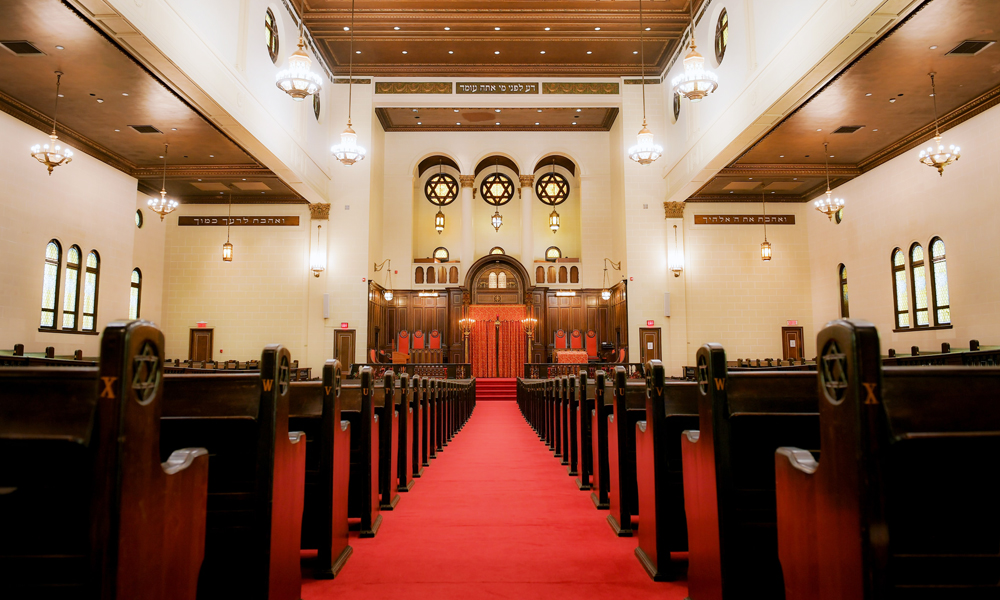by Erica Shaps
While I gaped at my surroundings with shock and wonder, my Yom Kippur hosts smiled at me with amusement and understanding. Since they moved to Israel decades ago, the vacant highways and main roads filled with strolling figures clad in white, children learning to ride shiny new bicycles, and teens racing skateboards up and down Haifa’s steep hills were taken for granted. For me, though, the scene looked like some form of post-apocalyptic utopia. It was a mesmerizing and moving sight, a true embodiment of the “Jewish and democratic” state ideal.
As I reflect on my first Yom Kippur in Israel, I realize that it also serves as an obvious visual representation of the contrast between American and Israeli Judaism. It is not uncommon to hear platitudes about the differences between Israeli and American Judaism: In Israel, there is a drastic divide between secular and religious, which is mostly seen as synonymous with Orthodox Judaism. In the States, we are quick to categorize ourselves within the frameworks of Orthodox , Reform, Reconstructionist, Conservative and Renewal Judaism. American Judaism is limited by lack of infrastructure, knowledge, funds and commitment. Israeli Judaism suffers from the controlling nature of a radically conservative Rabbinate and a lack of egalitarian and progressive options for those who may want them. That these gross generalizations pervade our cultures illustrates the divide.
The subtler distinctions, the kinds that can only truly be understood by witnessing them, are more important, presenting valuable learning opportunities for Americans and Israelis. At no time was this more apparent to me than over the High Holidays.
I am guilty of thinking of Jewish religious diversity in terms of the denominational spectrum. While this may be fairly accurate in the United States, the paradigm falls short of fully describing Judaism in Israel. During Rosh Hashanah and the following Shabbat, I had the opportunity to attend four different services. Though three out of four would be considered Orthodox, they were quite different from each other, suggesting that the religious community in Israel is not nearly as monolithic as we here in the States might believe it to be. One service met in a schoolroom filled with patio chairs. One was in a beautiful community center’s designated prayer space. One kept an orderly structure and tempo; another was completely organic and filled with spontaneous singing and dancing. Opportunities for women to participate varied greatly at each of the four minyanim. These differences do not even begin to touch upon the ethnic and cultural differences among traditionally Sephardic, Mizrahi and Ashkenazi congregations.
In addition, over the course of the High Holidays I felt completely welcomed and embraced, an experience that is not always replicated stateside. At all four of my Rosh Hashanah locations, as well as at the Haifa synagogue I attended for Yom Kippur, no one asked me for a ticket or any form of proof that I belonged. Although I had never been to the synagogue in Haifa before, I was offered an honor. I didn’t feel at all uncomfortable or unwelcome even though I was not a paying member.
Finally, the High Holidays in Israel are never a spectator sport. Although I love the booming voice of a hazzan and the graceful melodies of a choir, I sometimes find it too easy to sit back and listen to the prayers as if I were at a concert. This is not the case in Israel. Various community members led services with interesting and creative tunes. Participants sang loudly and passionately along with the leader, sometimes even getting up to dance. During announcements, seated participants called out events, stories or invitations. To varying degrees, each of the five services I attended felt natural, informal, and designed to foster participation.
I do not believe American and Israeli Judaism can, or should, look identical; each culture has its unique advantages and challenges. But that doesn’t mean that the differences between the two societies and their Jewish practices should not be explored and discussed. We can all improve by viewing our strengths and weakness through the lens of a society that is different from our own. Israelis can learn from the generally unproblematic coexistence of various denominations in American Judaism, and American Jews can learn from the the unrefined, active and welcoming quality of many services in Israel. In the New Year, I hope global Jewish communities can find opportunities for meaningful interactions with increased frequency, grow together, and be stronger for our efforts.


Your article is very interesting and I appreciate your sharing it with us. We also found our last Shabbat in Israel to be very uplifting with the sound of song throughout the service and the constant thumping of the rabbis hand.
Very interesting!